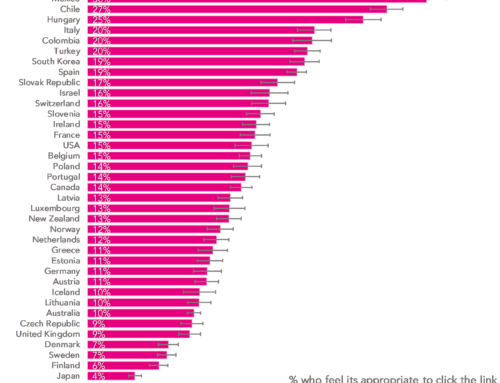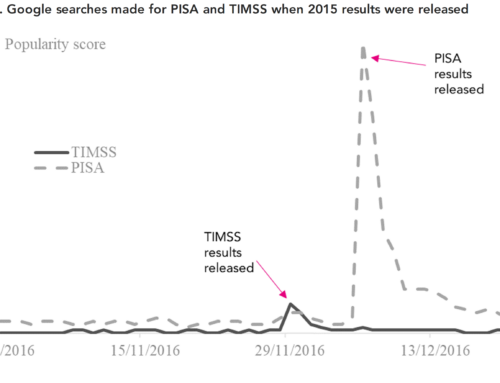It is widely considered important that children read regularly. A wide range of previous research has linked reading during childhood to improved language skills and higher levels of academic achievement more generally.
But does it matter what children choose to read? Does flicking through a magazine or reading a newspaper have the same benefits for young people as becoming engrossed in a novel? A lot less evidence currently exists on this.
In a research paper published earlier this year, my co-author Gemma Moss and I decided to explore this topic in detail.
The data we used was drawn from the OECD’s 2015 PISA study. This asked 15-year-olds how frequently they read the following different text types:
- fiction books
- non-fiction books
- newspapers
- magazines
- comic books
Within our paper, we examined how the frequency with which young people read each of these different types of materials was linked to young people’s PISA scores. Critically, our analysis controlled for a wide array of potential confounders (such as gender, socio-economic status and school attended) to try and rule out alternative explanations for our results.
A summary of our key findings can be found in the chart below. It illustrates how PISA scores differ between children who read each text type regularly (i.e. almost every day) versus those who almost never read that type of text.
Teenagers who frequently read newspapers, magazines, comics and non-fiction books do not achieve significantly higher PISA reading scores than those who do not.
Yet the same is not true for young people who read fiction books or novels.
Specifically, teenagers who read fiction almost every day score around 26 points higher on the PISA reading test than those who never read such books. This difference in achievement is large – the equivalent of around 10 months of additional schooling according to the OECD.
Is this result simply due to children who read fiction books just reading for a greater amount of time in total? After all, dipping in and out of a magazine, comic or newspaper takes a lot less time than trying to slog through a novel like War and Peace.
Interestingly, our analysis provided no evidence that this was the case.
We continued to find just as strong a ‘fiction effect’ even after we controlled for young people’s total weekly reading time.
This finding has important implications.
Parents and teachers should not encourage teenagers to “just read something”, no matter what this is.
Rather, they should focus their efforts on encouraging young people to engage more with novels and other lengthy fictional texts that encourages deep reading for sustained periods of time.
This is likely to be particularly important for boys from lower socio-economic backgrounds – the group we find to be reading this type of text the least, and who also have comparatively poor reading skills.
Want to stay up-to-date with the latest research from FFT Education Datalab? Sign up to Datalab’s mailing list to get notifications about new blogposts, or to receive the team’s half-termly newsletter.






Interesting, and heartening, because in my experience fiction is what children crave to read. Sometimes well-meaning parents (myself included) try to encourage them to read newspapers and magazines to vary their access to registers and vocabulary.
One of my peeves is when primary reading schemes penalise children for wanting to plough through a dozen books in the same series; the teachers would rather they read a picnic of different genres, but what children crave is lengthy immersion in a particular world and set of characters. Turns out that what children crave is often what’s good for them (except sugar, of course).
I agree with Mat & that is what the ‘class book’ was for. I’m sure it has to do with the need for concentration as well as effort. Snippets (like the Readers digest) should just whet the appetite. I wonder if there would be any difference in the type of newspaper? Reading tabloids certainly doesn’t take the effort of say the Times.
This is fascinating, especially in light of the research showing the importance of background knowledge to reading comprehension. The logical conclusion from that research would be that students who read a lot of informational text would do better on standardized reading tests because they’ve had the opportunity to acquire more general knowledge of the world and the vocabulary that goes with it. I wonder if there’s something about the emotional engagement that comes with reading fiction (especially novels) that enables readers to absorb more concepts and vocabulary. There’s another intriguing study showing that struggling readers who listened to their teachers reading novels aloud made 16 months of progress in only 12 weeks, as measured by standardized reading tests. More on that here: https://www.forbes.com/sites/nataliewexler/2019/07/28/the-power-of-just-reading-a-good-novel/#20b7c3ab64aa
Query a lacuna in your research: those who read religious texts (and hymns, etc).
Take me seriously: they require faith.
Fiction requires willing suspension of disbelief.
There is a similar (albeit different) theme in both.
And it stretches into learning about Calculus and trigonometry and physics and more.
Not seeing the whole picture; yet being willing to have sufficient faith to stick with “the story”.
I mean, how much disbelief needs to be suspended to handle the idea of an unobservable unverifiable “nothing” existing before the Big Bang because “time did not exist” then?
Indeed, how much faith is required to believe the varying theories that support the creation of the Nascar Lines, the Pyramids, Stonehenge and more? The documentary and other evidence is limited; the dates dubious…
Perhaps there is, then, something in faith as well as in reading War and Peace?